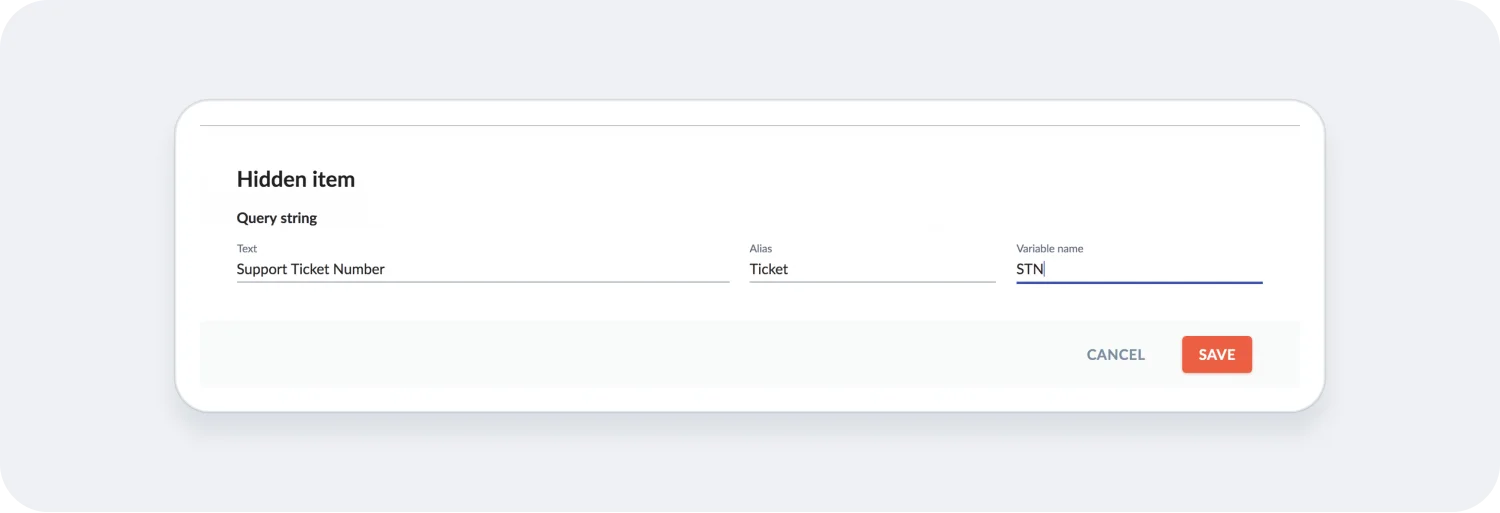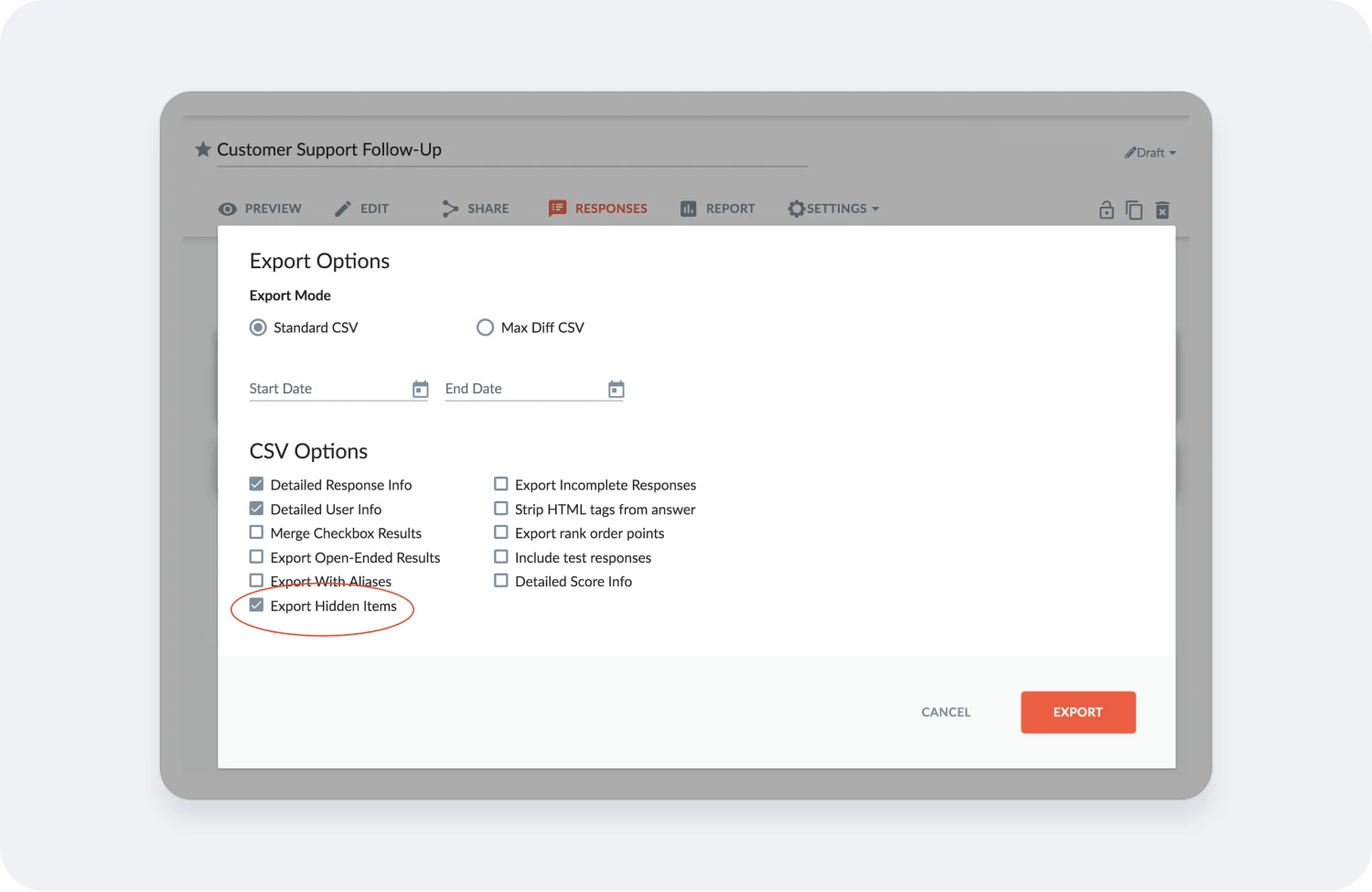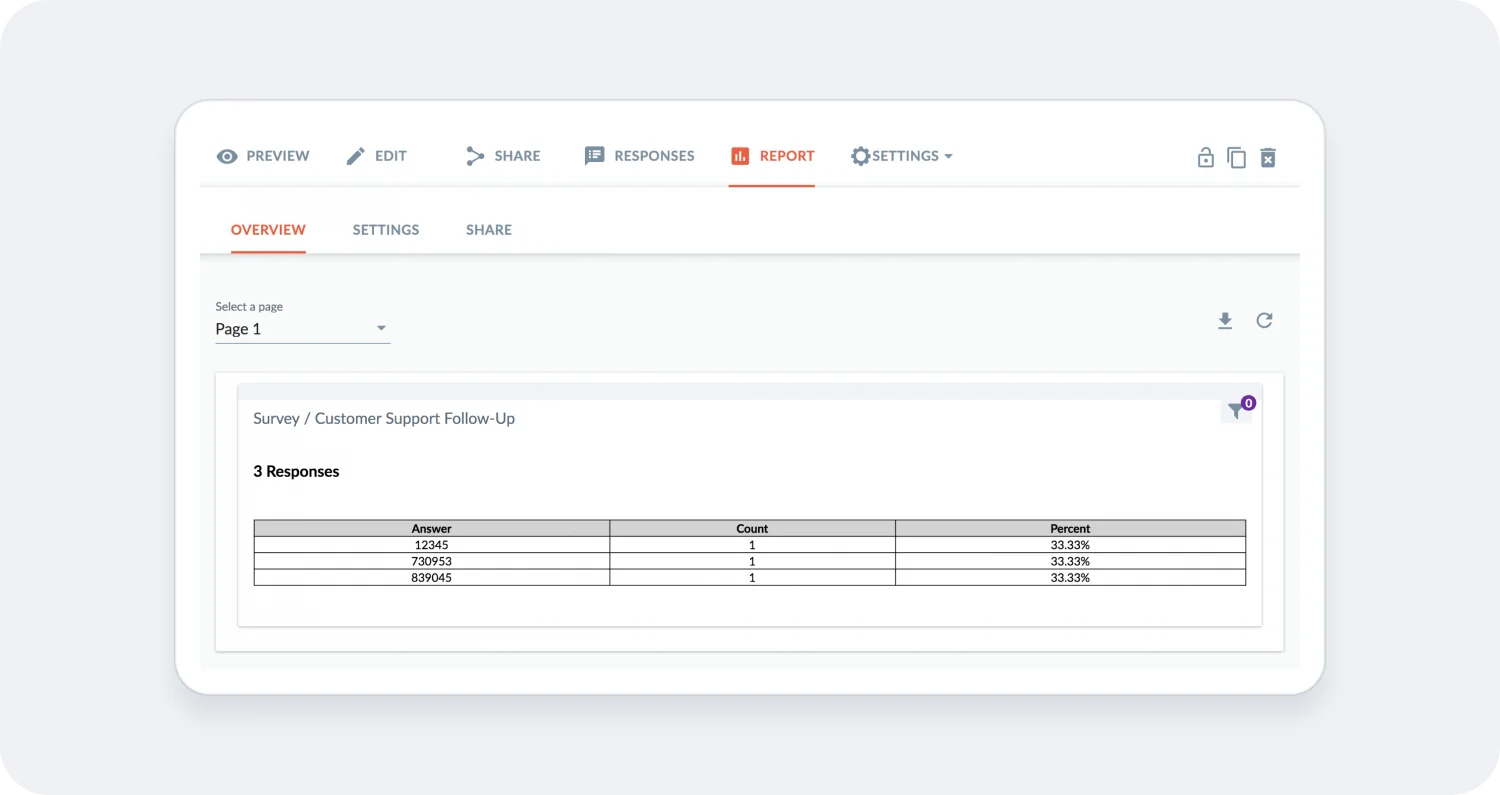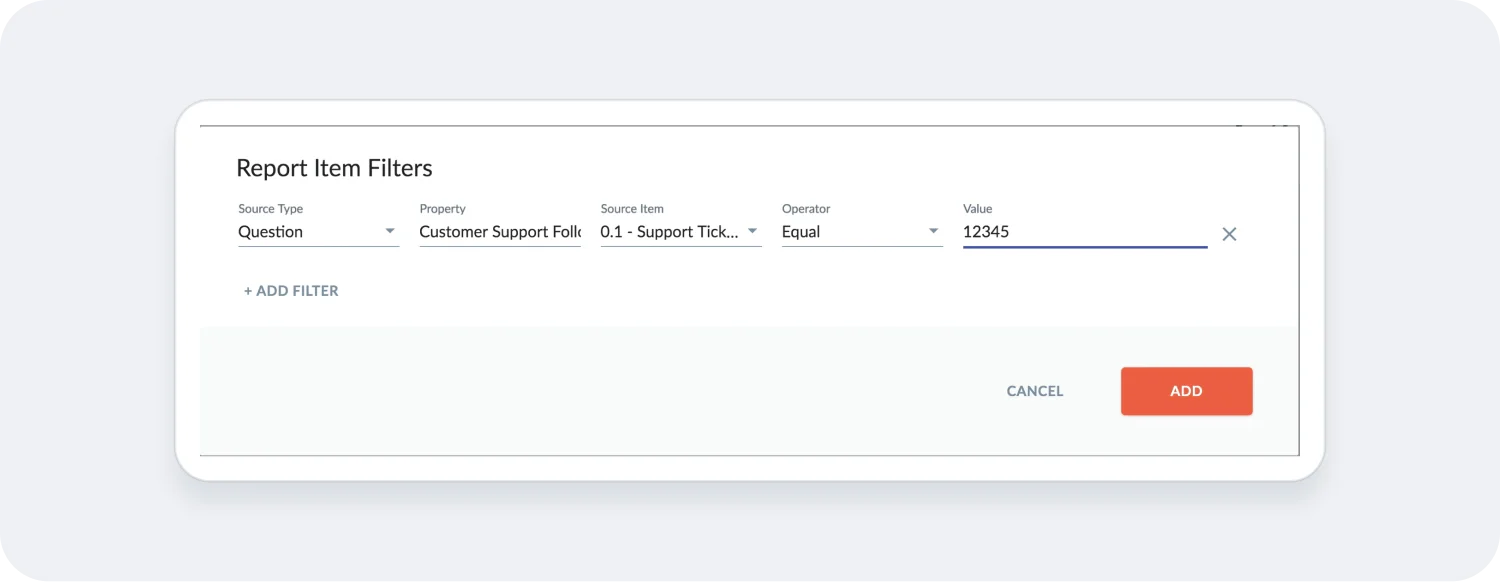Hello.
How can we help you?
How to add Query String Variables (Hidden Item)
What is a Hidden Item?
Hidden Items allow you to store data in a response without the respondent seeing it or having to enter it within the survey. Think of them as empty buckets that you can fill with data by adding that data to the survey URL or response session. That data can then be used to identify a response, filter a report, or set a condition in a survey.
For instance, you might want to use the same survey to gather feedback on a series of events or training sessions that you hold. In order to differentiate between the sessions, you could pass the session date or name in via a hidden item.
Another common use of hidden items is to pass a unique identifier, such as a customer id, through to the response so the respondent can be tracked even if he/she is not logged into Checkbox.
Hidden Items can be passed in manually or via code. This lesson will focus on passing a Hidden Item into a response manually using a query string in your survey URL (link).
Creating a Hidden Item
1. From the Survey Editor, expand the Hidden Items section and click Add Hidden Item.

2. Enter your Hidden Item Information
- Add to Text describe your Hidden Item, which will display in your reports and exports.
- Add an optional Alias if you’d like alternate or shorter question text to show in your exports or reports.
- Add the Variable Name that you want to show in your query string. You can use all or part of your Question Text or Alias or you can choose a generic value so that it’s not obvious to your respondent what your query string means. Variable Names cannot contain spaces and cannot be equal to the values “iid”, “id”, “u”, “r” or “s” as these values are used for other variables by the application. For this example, we will use “STN” as our Variable Text to indicate Support Ticket Number.

Sharing your survey with a Hidden Item
Unless you are writing code to pass a Hidden Item through to your survey programmatically, you will need to manually add your Hidden Item variable to your survey URL in the form of a query string when you share your survey. This is true whether you are using our email invitations, sharing a link on your website or through your personal email, or sharing your survey via social media.
To add the Hidden Item to your url, simply append the survey url with the following:
If your Hidden Item is the first query string value in your URL, then add ?[Variable]=[Hidden Item Value] to the end of your URL.
or
If the Hidden Item is not the first query string value in your url, then add &[Variable]=[Hidden Item Value] to the end of your URL.
**In our example below, we only have one query string or hidden item, so we have added ?STN=839045 to pass the support ticket number 839045 into this survey response.

Exporting Hidden Items in response details
When you export responses, you can choose to export Hidden Items, and the Question Text and Hidden Item values will show up in their own column of your response export.

Reporting on Hidden Items
When you view the standard report, Hidden Items will automatically be displayed in a Summary Table format on the first page.

Using Hidden Items as report filters
You can also use Hidden Items as report filters to filter your report on only the responses that contain a particular Hidden Item.


